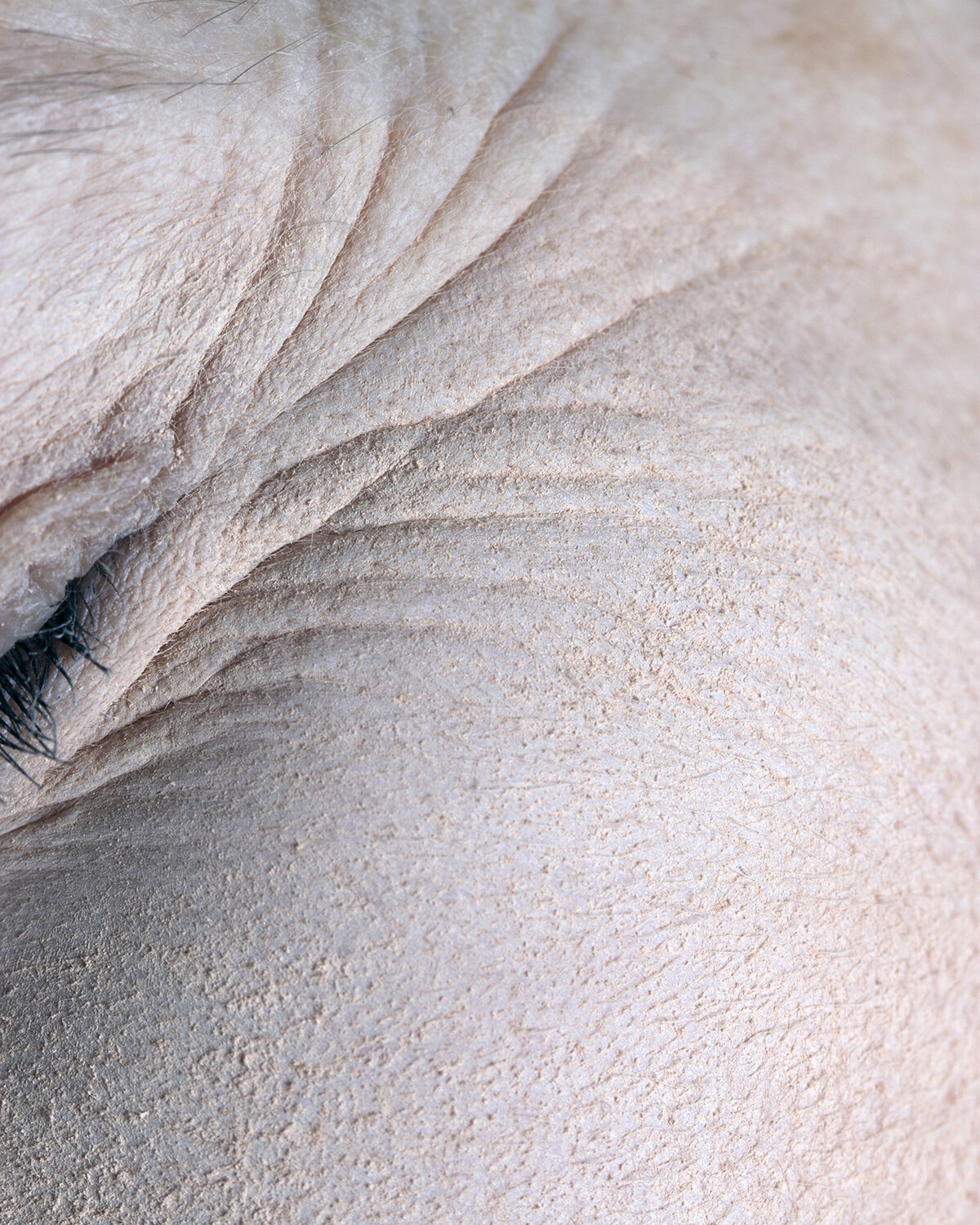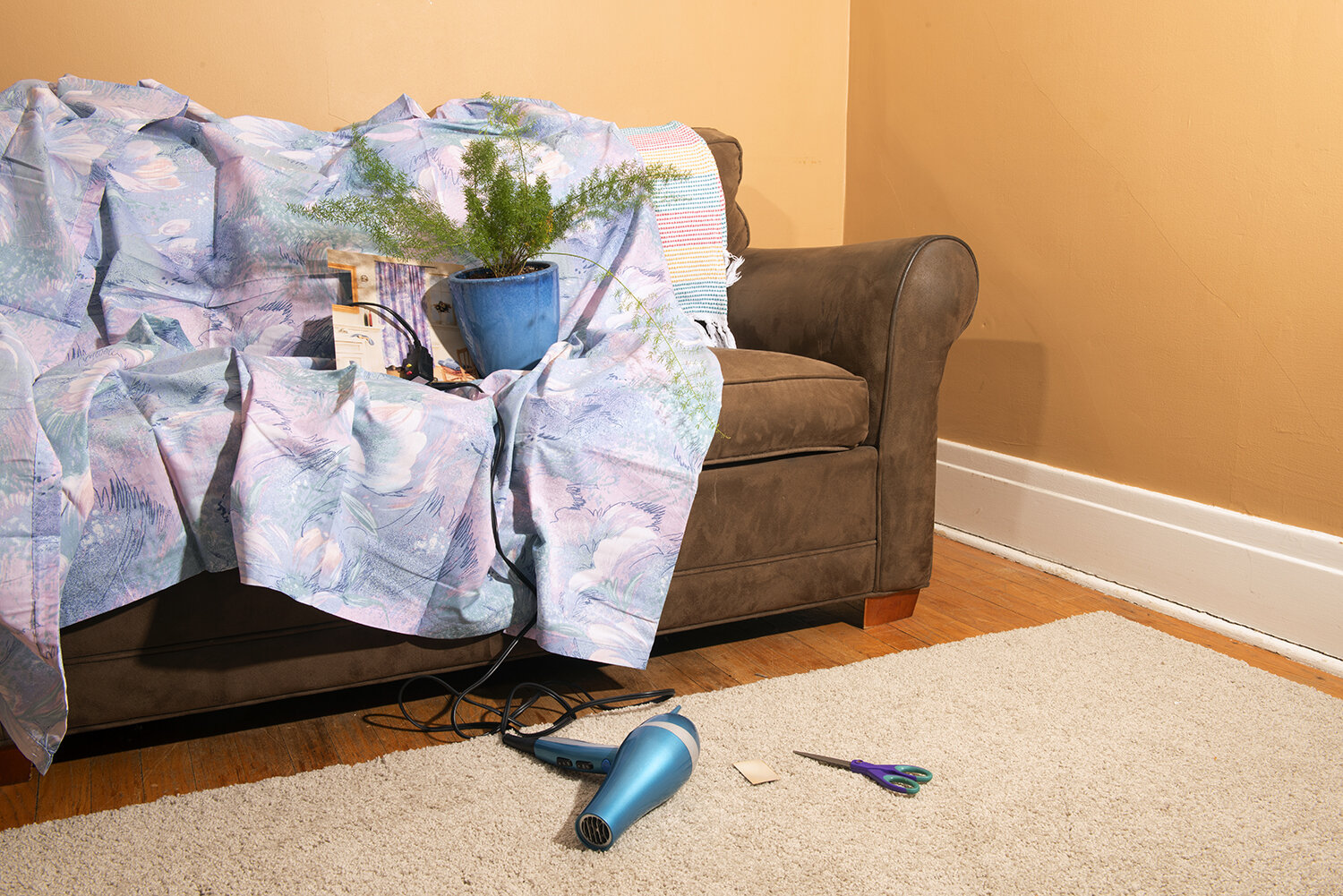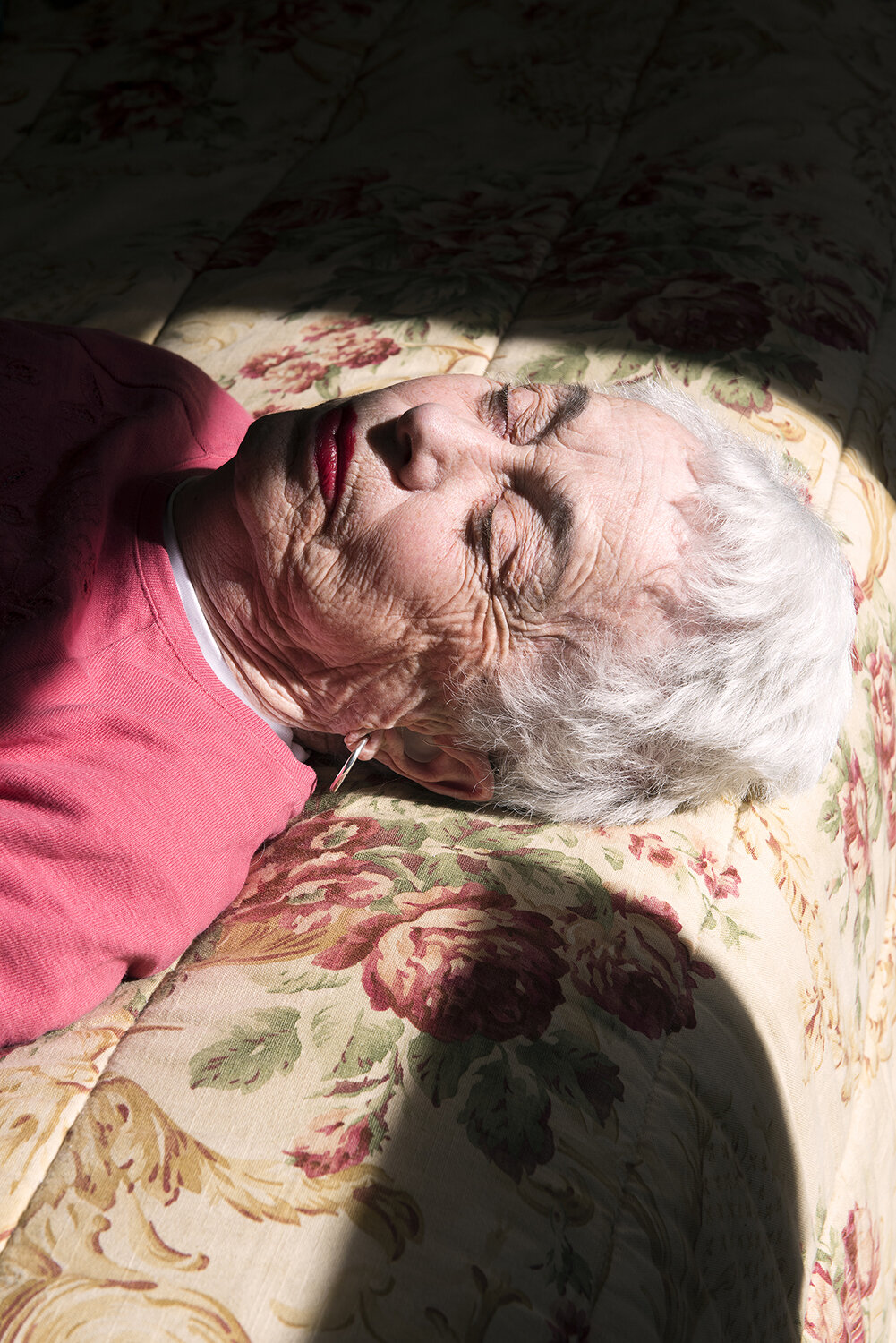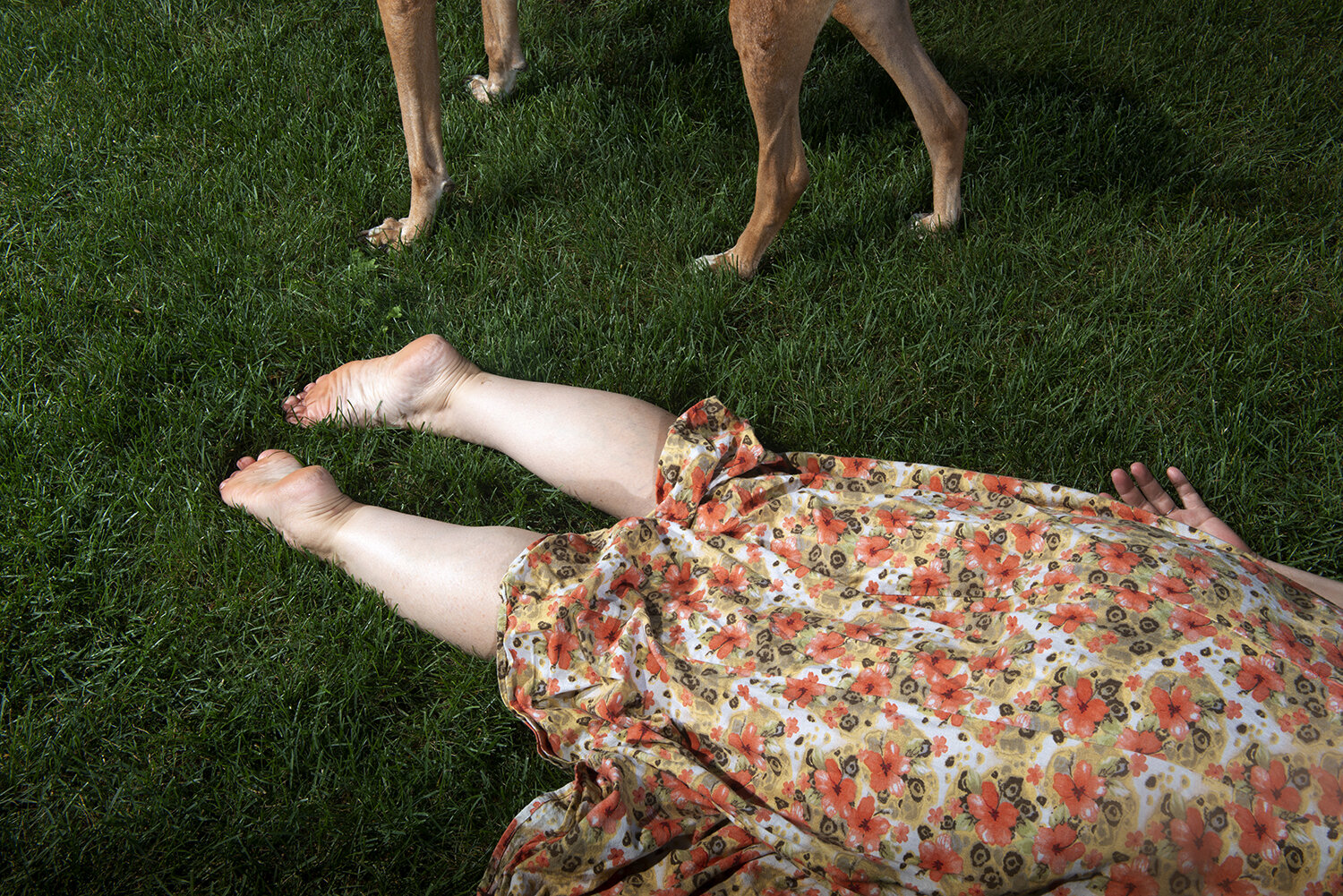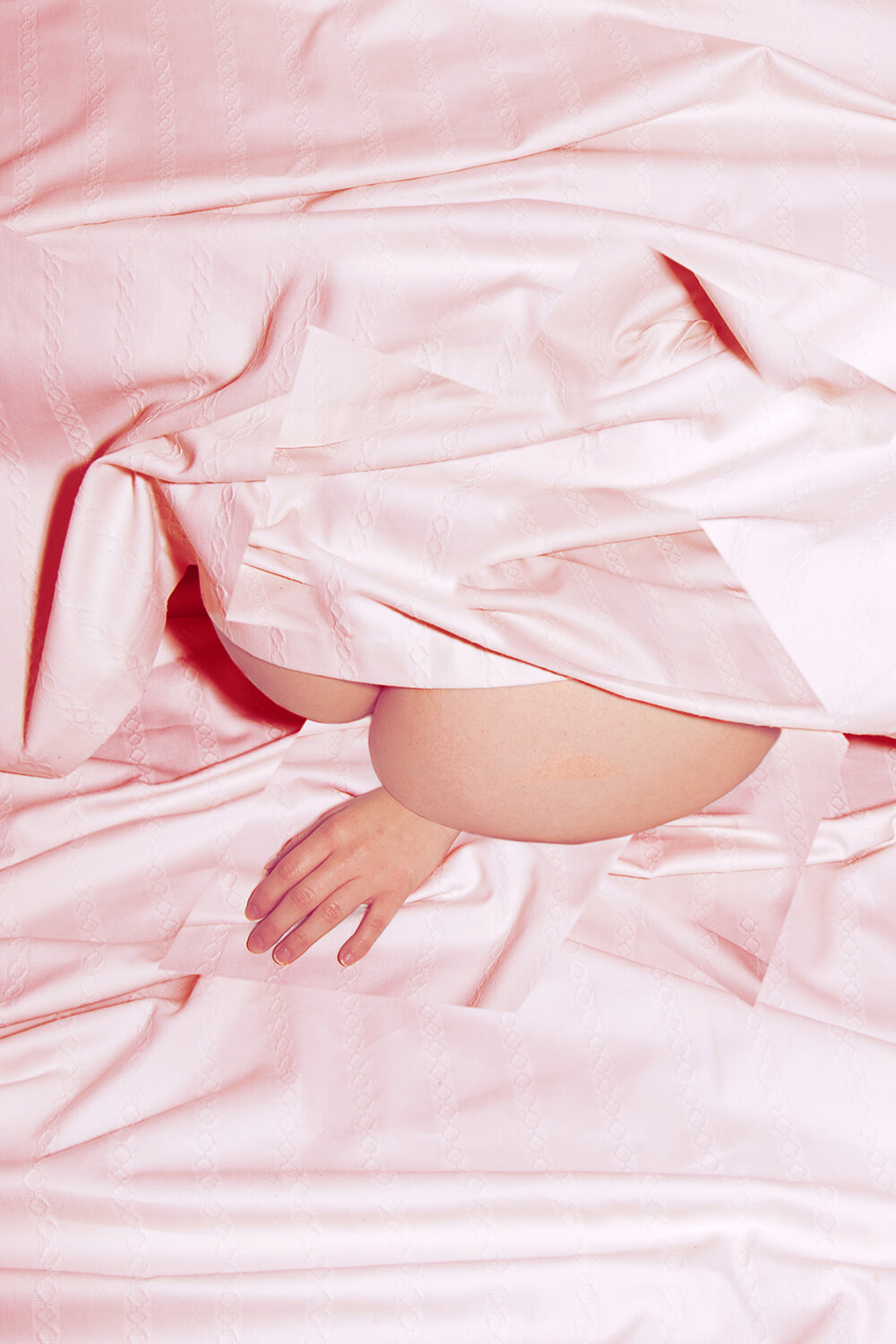Q&A: Allison DeBritz
By Natalie Krick | July 8, 2021
Allison DeBritz (b.1993) is an artist and educator examining themes of family, the body and motherhood through an interdisciplinary, feminist lens. DeBritz’s most recent project, gravity locked her in rotation, explores the chaotic reality, frustration and sacrifice entrenched in motherhood and the gendered expectations that manifest through this tension. This body of work was created collaboratively with her mother, Stacy R. DeBritz, who is an artist and poet.
DeBritz holds an MFA in Art Photography from Syracuse University and a BFA in Photography from SUNY New Paltz. DeBritz currently lives and works in upstate New York.
Natalie Krick (b. 1986 Portland Oregon) is a Seattle based artist whose work investigates visual perception and pleasure through complicating the act of looking. She holds a BFA from the School of Visual Arts and an MFA from Columbia College Chicago. In 2015 Krick was a recipient of an Individual Photographer's Fellowship from the Aaron Siskind Foundation for Natural Deceptions. In 2017 a book of the work was published by Skylark Editions and Krick was awarded the Aperture Portfolio Prize. Krick’s work has recently been exhibited at SF Camerawork, The Museum of Contemporary Photography, Aperture Foundation, The Museum of Sex, and Blue Sky Gallery. Her work has been highlighted in several international publications including BOMB, The New Yorker, Vogue Italia, PDN, Aperture, and Vrij Nederland. Krick was featured on Strange Fire in 2016.
Natalie Krick (NK): I love the title of your project: gravity locked in her rotation. It makes me think of repetition, the moon, menstruation, aging and menopause but it also suggests being trapped in a cycle that one cannot control. Can you tell me a little more about the title?
Allison DeBritz (AD): I love those comparisons; I was thinking about similar things when I chose the title. I wanted it to be poetic and open ended, rather than something really literal. The title is actually from a poem my mom wrote. I talk a lot about my mom being a visual artist, but poetry has been her main mode of working over the last several years. She often writes about her family, particularly her mother, so I thought it would be fitting to use something she had written as my title. When I came across this line, I knew it was perfect. I think its lyrical nature piques the interest of the viewer and invites them to explore the concepts in my work.
NK: Thinking about cycles ... the act of photographing can also be a cycle—an event that is regularly repeated. I’m interested in how you work with your mother. She began as your subject but over time became a collaborator. I’m curious to know how that shift has changed how you approach making photographs and how she influences your work.
AD: The routine of working with my mom goes all the way back to when I was building my portfolio for college applications. She would listen to my ideas for a shoot, help me construct a “set” somewhere in our house and then look at all the images with me after shooting. She has always been my second set of eyes and intricately involved in my image making process. Years later we repeated this cycle while I worked on my applications for graduate school. I was researching schools, visiting them, working on my applications, and making a whole new body of work all at the same time. It was an insane process, but I actually made something every day. Just like in high school, after every shoot I’d show my mom my favorite images. I loved having someone to share that “I just made a really great photograph” high with. So, when the subject of my work shifted to being about my mother, we already had a routine to follow, just this time she was in front of the camera. It wasn’t until about a year into the project that I realized I was sort of lying about her being a collaborator. Yes, she posed for me and looked at my images after, but I was in total control. What I realized was that letting go of that control and allowing her to truly collaborate with me—her actually having a say in what we made together—would crack my work wide open in a way it desperately needed. I started to see her as an artist, not just my mother, not just a mom. I wasn’t able to do that in the past because I always knew her as my mother before anything else, being an artist was like a side gig compared to that. Once my perspective of my mom began to shift, I gained this whole new respect for her and her ability to be both a successful mother and an artist. I started this body of work because I was afraid that I could never be both—it was when I truly began to collaborate with my mom that I realized it was in fact possible to be a mother and an artist and thrive as both.
We’ve Come to Reclaim Our Bodies
NK: I love that. I know you were motivated to start making this work because of your fears surrounding the balance between being an artist and starting a family - specifically because both your grandmother and mother gave up their art careers when they became mothers. It seems like we're unlearning the myth that we need to choose between being a mother or an artist. But it was just a few years ago when Tracey Emin said, “There are good artists who have children. Of course there are. They are called men.” We’re still stuck in this reality where mothers (generally speaking) take on far more than their male partners when it comes to housework and child care. I’m so inspired by mothers who are making work about birth (My Birth by Carmen Winant) or using the constraints of motherhood as a parameter to make art (Jessica Labatte working in the studio during naptime) yet it’s obvious that mothers are not getting the support they need. And on top of that women are severely under-represented in the art world. Has working through this project with your mother and seeing her as an artist helped you feel like a balance is possible?
AD: What really happened while working with my mom was a shift in my perspective of what “successful” means. As a younger artist I thought success only meant having a career in which people knew your name—you had gallery shows and made money from your artwork. That can certainly be one way of defining success, but I learned it's not the only way. I actually think that creating a life in which a person, specifically a mother, can have a family (if that is what she wants) and still pursue art, is really the most success one can achieve. Being a mother and an artist, loving both your family and your work defies a lot of gendered expectations. When women use motherhood as the scaffolding for their work and announce their experience rather than hide it, it actually feels very radical. It's like our way of fighting against this system that wants women to shut up, sit at home and never share any of the messy realities of life and motherhood. I am starting a new project exploring mother’s relationships to birth and their postpartum experience. I think birth is even more of a taboo subject than motherhood, and birthing people need more platforms for conversation and education. To bring it back to my mom—I do feel like working with her has changed my ideas and expectations of what is possible. My vision of the future is much more expansive than it was before.
NK: This project is playful in many ways—your approach changes from image to image—some photographs appear to be straight photography yet you also play with collage, appropriation and recently began working with installation. This way of working keeps the viewer on their toes—grasping to understand how each piece relates to the whole. Over the past few years I’ve come to think of photography as an act of collage, the combining of fragments to create meaning. Do you think of photography and collage as similar ways of working? How do you approach making a still life verus making a portrait versus making a collage?
AD: My way of collaging and photographing are so intricately tied together—I think of them as almost the same process, just a different outcome. That’s why both types of images show up in the same body of work. When I make images, I combine different elements that interest me—an object, a person, or a pattern—and build everything else around that. Sometimes I do it with a camera, sometimes scissors, sometimes a scanner. I work very intuitively, and I don’t ever limit myself to one way of creating. I trust my instincts when I’m working, so I know that eventually the images will settle into each other even if they’re radically different.
NK: Working in this fluid manner really flies in the face of what many of us were taught a photography project should be or look like. (which I find very exciting!) And now you’ve started to push this even further by the way you are installing the photographs in the gallery space. Tell me about your recent thesis show and your approach to installation.
AD: I have always worked in a more non-traditional manner, which is what led me to experimenting with the limits of photography. I’m not trying to hide my process—I want people to know that I use Photoshop and see the light stand or a cord in my image. This obsession with trying to break the constraints of my medium evolved into challenging conventional ways in which photographs are presented. Putting together a thesis show during a pandemic that only a handful of people would actually see in person was daunting, disappointing and thrilling all at the same time. While developing my installation I knew one thing for sure, I did not want uniform frames hung in a perfectly straight line on the wall. One of my tactics was to break out of the rectangle that so often defines a photograph. I designed two large half oval shapes that were about four feet tall and an inch and a half thick. I painted the edges light pink and then mounted an inkjet print on each of them. They were installed to sit on the floor and lean up against the wall—my intention being that they functioned more like objects than images. I also had photographs in different size and color frames hung at varying heights. Some were practically on the ground while others were at the very top of the wall. There were two shelves on one long wall which each held about ten photographs in small, very campy/domestic frames. There was a huge learning curve in this process but I’m really excited about some of the discoveries I made, especially the shapes. There will be another version of this show in New York City on Governor’s Island in July and I am creating a new set of shapes for that.
Installation of gravity locked in her rotation at Syracuse University Art Museum
NK: One of my favorite images of yours is After the babies were born. It’s so frustrating and satisfying to look at. It is fruitless (wink) to attempt rinsing the watermelon in this bathroom sink—yet if that faucet wasn’t there it would be a perfect fit. Of course my mind directly relates the watermelon to a pregnant belly. Where did this image come from?
AD: I’m glad you asked about this image because there is actually a good story behind it. The house I grew up in is over 100 years old and the downstairs bathroom is covered in yellow tiles. I have always wanted to make an image in there but it’s a small bathroom so it’s challenging to fit lights, props and myself in the space. During quarantine last summer I had all the time in the world and decided to go for it. First I was trying to photograph a bar of soap, then my mom in the tiny shower, then a mirror, then a plant and nothing was working. I went in and out the backdoor a few times and kept seeing this watermelon sitting in the garage. The only way to describe the feeling I had when I looked at that watermelon is magnetic. I can still remember it so strongly, this nagging feeling that I absolutely had to photograph it. Finally I scooped it up and naturally I put it in the sink because, like you said, the shapes seemed to fit. Thank god it didn’t though because that really made the image. My younger brother walked in as I was shooting the watermelon and couldn’t stop laughing, he just thought it was so weird. He said something along the lines of, “Is that what you’re doing with your terminal art degree!?” It was a pretty hilarious scene to walk in on but nonetheless it produced this image, which has turned into one of my favorites. It’s a great example of how following my instincts when working pays off. It elicits this frustration, which can be hard to capture in a photograph, and emulates the pregnant form all while providing humor.
After the Babies Were Born



